Tests challenge whether centuries-old violins really are the best ever
Again and again, scientists find, new instruments can sound as good as the famed oldies
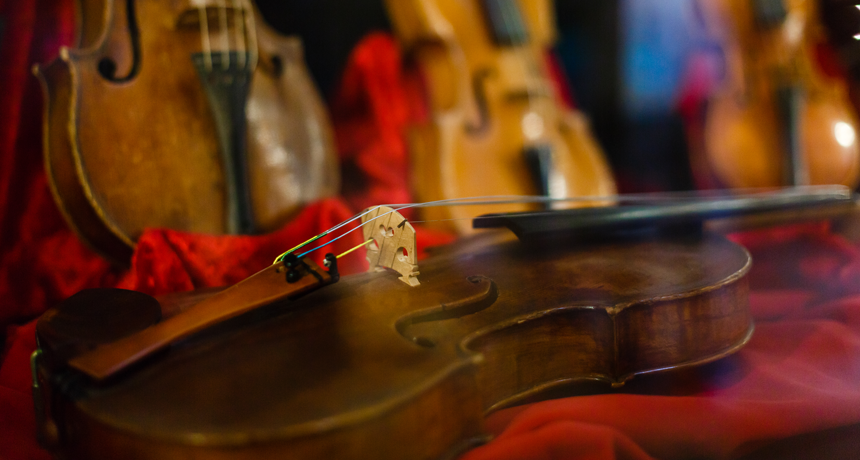
Some violins made centuries ago in Italy have a reputation for unmatched quality and sound. In fact, neither musicians nor audiences could tell much difference between them and modern-made instruments in a host of studies.
Sinenkiy/iStock/Getty Images Plus
By Sid Perkins
In 2010, a violin made in the late 1690s sold at auction for $3.6 million. At the time, that was a record price for any musical instrument. But the record didn’t last long. The very next year, another violin sold for more than $15.9 million. What could make a violin worth so much? In some cases, because it was made by a famous violinmaker.
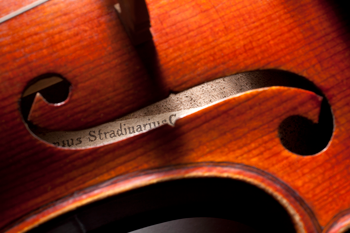
The late 1600s and early 1700s are known as the golden age of violinmaking. Several renowned craftsmen lived in Italy. One of the best known is Antonio Stradivari. (The instruments that he and his family made are known as Stradivarius violins.) Another well-known violinmaker from that time is Giuseppe Guarneri. He and his family, many of whom made violins, lived in the same town as Stradivari.
Only a few hundred of the instruments made by these two men survive. Their rarity has helped drive their high prices. So has their reputation for producing a gorgeous sound. These instruments are reputed to be among the finest ever made.
Many researchers have searched for the secret behind their sound. Is it something about the wood used to make them? Does it reflect the chemicals used to treat the wood? Perhaps it was the type of protective varnish applied that also gives it its luster?
Such details could affect how the violins sound. But in many ways, those famous violins are just like those made by other craftsmen. So some scientists now wonder if they should be asking different questions. For instance, do Stradivarius violins truly sound better than modern-day instruments?
Evolution in action
When many people hear the word “evolution,” they think of biology. The word describes how species undergo changes through time. If genetic changes allow a new feature to arise, that trait can be passed on to future generations. That’s especially true if the feature makes a creature better adapted to its environment.
But in a sense, objects can evolve — or change through time — too. Computer chips have gotten smaller and faster. The first cell phones were relatively big and bulky. And, they only made phone calls! Today, cell phones are small, light and as capable as desktop computers. Even musical instruments have evolved, notes Nicholas Makris. He’s a mechanical engineer at the Massachusetts Institute of Technology in Cambridge. The violin is a good example, he says.
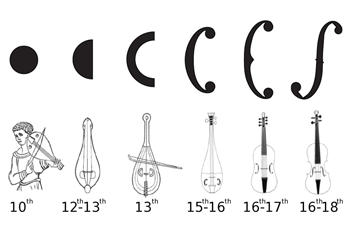
In the 10th century, there was no such thing as a violin. But there was a stringed instrument called a fithele (Fith-EEL). As with today’s violin, musicians played it with a bow. The fithele was about the size of a violin, but it had a short neck and a plumper body with no waist. The holes in the front of the instrument were small circles.
By the 12th century, craftsmen were making an instrument called the lyra. It had a slimmer body, a slightly longer neck and semicircular sound holes. Then, in the 13th through 16th centuries came the rebec (REE-beck). It had an even longer neck and C-shaped sound holes. Explains Makris, only in the 16th century did an instrument we might recognize as a violin appear.
So why did these instruments evolve? One big reason, Makris and his colleagues propose, was the need to make more sound. A fithele could be easily heard around a campfire or in a small room. But as musical venues and audiences grew, instruments needed to be louder. By the time orchestras and opera halls became popular in the early 1600s, instruments needed to project sound much farther. And one key factor is the size and shape of an instrument’s sound holes.
Sound science
As a musician pulls a bow across an instrument’s strings, the whole face of the instrument vibrates. That causes air to flow in and out of the sound holes. Typically, the sound is generated along the edges of those holes. So in general, the longer the perimeter of the sound holes, the louder the instrument.
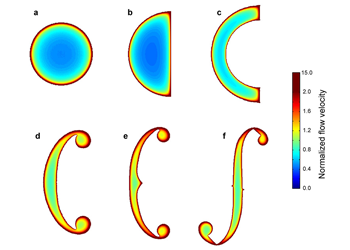
Makris and his team used computers to estimate how loud early instruments would have been. They calculated a measure called “acoustic radiated power.” That estimates the volume of sound an instrument can produce. The team compared fitheles, rebecs and early violins. And the newer instruments proved much more powerful than the older ones. Overall, early violins projected sound about twice as well as fitheles, the researchers found.
Medieval craftsmen didn’t design their instruments using computers, of course. And even with a computer, crunching the numbers to calculate airflow through sound holes is difficult. “This is pretty complicated math,” Makris notes. But the instrument designers didn’t need to know all the numbers, he adds. They could just listen for a difference when they changed their construction. If they liked the sound from a new design, they might use it in their next instruments. Over time, the instruments gradually evolved to become more powerful.
Even during the golden age of violinmaking, sound holes continued to evolve, the researchers found. They measured the sound holes of 470 Italian violins made between the 1560s and the 1740s. Over that time, the shape of the sound holes got longer and more complex. Both of those trends tended to increase the instruments’ power, says Makris. By the 1740s, violins were about 60 percent more powerful than they had been in the mid-1500s.
Chips ahoy
Other types of scientific studies are harder to do on rare instruments. Many would destroy the violin piece sampled. And no one wants a scientist to drill into their multi-million-dollar Stradivarius. But just like the family car, such instruments sometimes need repairs or tune-ups. And those procedures sometimes yield chips of wood that researchers can study.
“Most people don’t realize that these instruments aren’t exactly the same as when they left the violinmaker’s shop,” says Joseph Curtin. He’s a luthier, a person who makes or repairs violins and other stringed instruments. He has a woodshop and studio near Ann Arbor, Mich.
Scientists have already disproven one popular theory about what made 16th-century violins so good. Some people had argued that the wood in those violins came from trees that grew during a colder-than-average period. It was known as the Little Ice Age. Growth rings in those trees would have been closer together. That would tend to make the wood slightly denser. And this could stiffen the wood, affecting how it vibrates.
“But that theory is totally wrong,” says Hwan-Ching Tai. He’s a biochemist at National Taiwan University in Taipei. “You can easily see the tree rings in the wood used to make the face of those instruments,” he notes. “They’re not closer together than in violins made in other eras.” Other researchers have scanned the wood with X-rays. They back up the visual observations, Tai adds.
In a more recent study, he and his team analyzed samples of maple wood taken from repairs done on five old Italian violins and cellos. Stradivari had made four of them, Guarneri the other. The team compared the chemical composition of those samples with fresh maple that had been grown in the same part of northern Italy where these ancient craftsmen had gotten their wood.
To their surprise, Tai’s team found that wood from the old instruments contained much higher levels of several elements: aluminum, copper, zinc, calcium, sodium and potassium. Craftsmen of old may have used these chemicals to help preserve the wood, Tai says. Such treatments may have strengthened chemical bonds in the wood. And that may affect how the wood now sounds as it vibrates.
“Unfortunately, wood chemistry is extremely complex and poorly understood,” says Tai. Scientists can only surmise that such treatments may have affected the instruments’ acoustics. But the practice could help explain one observation by violin restorers: Instruments made in Stradivari’s town rarely show damage from wood-eating worms.
A good reputation
For decades — even centuries — Stradivarius violins were considered to be the best ever made. And among many musicians and music lovers, they still have that reputation. “There’s almost a mythology about these instruments,” says Christopher Plack. He’s a psychoacoustician (SY-ko-ah-koo-STISH-uhn). That means he studies how people perceive sounds. He works at Lancaster University in England.
But scientific studies have begun casting doubt on what people had long presumed. “There’ve been informal studies of these instruments for more than a century,” notes Claudia Fritz. “But they’ve been seriously studied only in the past decade or so,” she says. Fritz is an expert in musical acoustics at CNRS in Paris, France. (That’s short for Centre National de la Recherce Scientifique. It is France’s national center for scientific research.)
Early this decade, Fritz, Curtin and other team members began a series of research studies. Their projects compared old Italian violins — two Stradivarius, one Guarneri — with modern-day instruments. In the first study, the team asked 21 experienced violinists to play the three old violins and three high-quality new instruments. Here’s the tricky part: The researchers had the musicians play the instruments while wearing dark goggles in a dimly lit room. That way, the musicians couldn’t see what instruments they were playing. And to mask any distinctive smells of the instruments, the researchers dabbed a smelly substance beneath each violin’s chinrest.
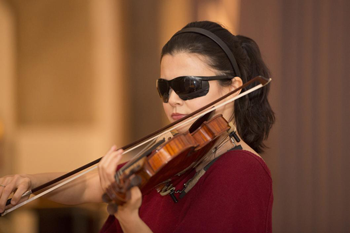
In one test, each musician was given 20 minutes to play all six violins. Then, each rated the instruments in several categories. Finally, they were asked to pick their favorite instrument — the one they could take home, if allowed.
In a second test, each musician was asked to play two of the violins. Then, they were asked to choose which one was better. They repeated the process for 10 pairings. During the test, the musicians didn’t know that one violin of each pair was a Stradivarius. The other instrument was modern-made.
The team’s test results “present a striking challenge to conventional wisdom,” Fritz and her colleagues reported in 2012. Overall, and in head-to-head tests, most preferred the new violin. They preferred the Stradivarius least! In fact, there seemed to be no link between an instrument’s age or value and how well a musician rated its sound. Finally, most musicians seemed unable to tell if the instrument they were playing was old or new.
Results of a follow-up study two years later largely matched those of the first. This one, reported in 2014, had 10 renowned soloists play 12 violins. Six were new, five were made by Stradivari and one was made by Guarneri. The musicians were told to pretend that they were replacing their own violin with a different instrument for an upcoming concert tour. Each played the 12 candidates in two 75-minute-long sessions. One session was held in a rehearsal room. The other one took place in a 300-seat concert hall.
Six of the 10 soloists chose a modern violin to replace their own. Only four chose one of the old Italian instruments. The musicians rated one modern-made violin as by far the best. And once again, musicians typically couldn’t tell the new instruments from the old.
Hearing tests
Finally, Fritz and her team asked an audience to rate the sound of violins it heard playing. The musician was behind a screen, so the listeners couldn’t see the instruments as they were played. And as in previous studies, the soloists wore dark goggles so they, too, could not tell one instrument from another. In some tests, they played with a small orchestra. In other tests, they played alone.
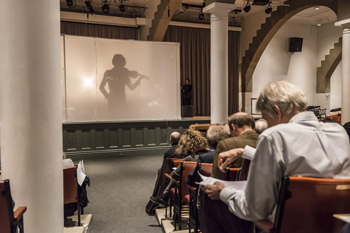
Overall, listeners preferred the sound of the new violins compared to the old ones. They also found that the new instruments projected their music better. In other words, to the listeners they seemed louder and more powerful. (That was true whether or not the violins had been played with an orchestra.) Once again, the listeners couldn’t reliably guess from sound alone whether or not a violin was a new instrument or an old one.
Although results of the studies are clear, the Stradivarius myth will likely live on, says Fritz. “There are always people who dismiss the studies,” she notes. Even among the musicians who participated in the studies, “very few of them have changed their minds,” she notes.
For young musicians, Fritz has a message: “They should be open-minded about using a new violin” instead of an older one, even if was made by someone famous. “A musician should be recognized for how they play, not for the instrument that they’re playing.







